content marketing
description: a type of digital marketing based on online content (text, video, audio and images) typically published on digital platforms and social media platforms.
57 results
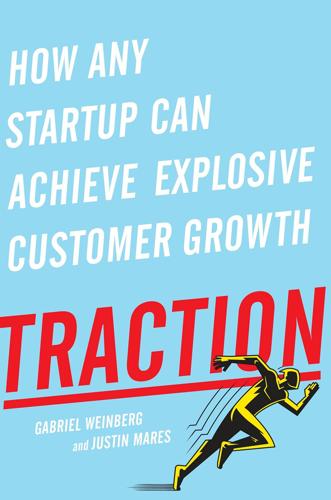
Traction: How Any Startup Can Achieve Explosive Customer Growth
by
Gabriel Weinberg
and
Justin Mares
Published 5 Oct 2015
However, you can utilize other channels as part of your core channel strategy. For example, suppose your core channel is content marketing, centered around your company blog. To jump-start your blog you may target other blogs for guest posts (in the targeting blogs channel). You might also buy social ads to amplify your best posts on Twitter and Facebook (in the social and display ads channel). In both these cases, you are not solely focusing on these secondary channels to get growth; you are using them to feed into your content marketing strategy. Now, both of those examples are pretty standard. What if you could find a way to use community building, speaking engagements, or offline ads to jump-start your content marketing strategy?
…
This meant that traction channels without per-user acquisition costs (e.g., publicity, content marketing, SEO, viral marketing) needed to drive all of its growth. Interestingly, the OkCupid team received much more organic publicity after launching the blog than they did when working with PR firms. CNN, Rachael Ray, The New York Times, and many other media outlets were interested in the blog topics they covered. Their blog also had major SEO benefits. When they launched it, they were nowhere near the top of search results for the term “online dating.” About a year later, they were the first result for that highly competitive term. CONTENT MARKETING TACTICS The most common hurdle in content marketing is writer’s block.
…
These posts produced big traffic spikes when they launched, and led to a lot of long-tail opportunities as people discovered the content over time. Robert mentioned that they’ve been approached multiple times by writers for major publications who want to cite them as a source. OkCupid has a similar strategy that we covered under content marketing. Though its engineering efforts have certainly helped its content marketing, RJMetrics seriously began to use this channel when it started building tools and microsites. It owns and creates content for domains like cohortanalysis.com and querymongo.com, which contain keywords a potential RJMetrics customer would search for. In the case of querymongo.com, RJMetrics built a tool that translates SQL queries to MongoDB syntax (two database technologies).
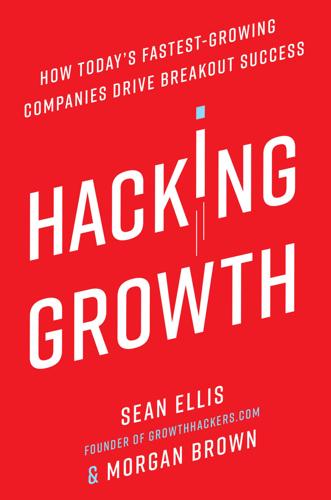
Hacking Growth: How Today's Fastest-Growing Companies Drive Breakout Success
by
Sean Ellis
and
Morgan Brown
Published 24 Apr 2017
We’ve drawn on their categorizations to compile the following (representative, but not exhaustive) set of options. THE THREE CATEGORIES OF CHANNELS Of course, within each of these channels many specific tactical options are available. For content marketing, for example, GrowthHackers member Pushkar Gaikwad compiled this helpful list of just some of the types, which of course are always proliferating: THE LEADING TYPES OF CONTENT MARKETING Listing all of the specific options for each of the channels and discussing the ins and outs of each is beyond the scope of possibility here—that would require many books. But a wealth of detailed information about best practices for all of these options is available online, from the experts mentioned above and many others, and our point is that exploring them should be your first step in the prioritization process.
…
For example, if you are selling a product to other businesses (i.e., business-to-business), you will often need a sales team and sales support operation to gain traction, a presence at trade shows, where sales staff can meet with prospective clients, and a content marketing strategy, which helps establish a company’s expertise; therefore, content marketing, trade shows, and sales are likely to be among the most effective channels for reaching your target customer. An e-commerce store’s business model revolves around driving the highest volume of potential shoppers to its site, and so search ads and SEO are obviously vital channels, while marketplace businesses like Uber and eBay must divide efforts between channels for bringing in suppliers and those aimed at shoppers (or riders).
…
The cross-pollination of expertise between engineering and marketing can be particularly fruitful in generating ideas for hacks to try. The type of marketing expertise the team needs may vary depending on the type of company or product. For example, a content growth team, working to build readership, would clearly benefit from having a content marketing specialist onboard. For example, at Inman News, a trade journal for real estate professionals, where Morgan is COO, the growth team includes the email marketing director, because the company’s growth is heavily reliant on email as a channel for acquiring, monetizing, and retaining customers.
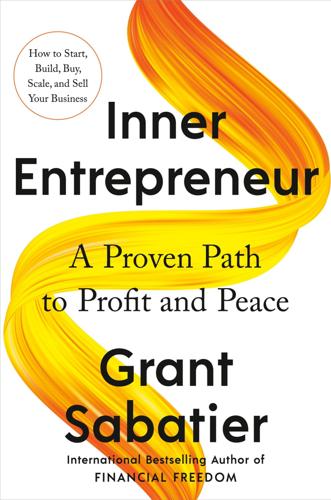
Inner Entrepreneur: A Proven Path to Profit and Peace
by
Grant Sabatier
Published 10 Mar 2025
If you have a physical address for your business—like a storefront or public office—embed a Google map on your Contact page. This will help elevate your local search rankings. Content Marketing Pages As I explained, a consistent, relevant, and engaging content marketing strategy helps build trust, recognition, and credibility among your target customers. Even if you’re not a content-first business like a blog or YouTube channel, you will benefit from creating and sharing quality content online, especially if you optimize that content for search. Here are my best SEO practices for your content marketing pages. Select a Keyword-Rich Title and URL The more relevant your title to your target reader, the more likely they are to click on it when it comes up in a Google search.
…
A platform is everything that represents you to the world—from your message to your website, newsletter, and social media. Great Content Builds Great Businesses All great businesses are content businesses. Great content allows you to connect with customers and establish your competitive advantage. Content marketing—offering users free, high-value content—is the most powerful form of organic marketing. Whether you own a plumbing business or you’re an in-demand influencer, people will judge you and your products based on the content you put into the world. Content allows them to determine if you’re trustworthy, an expert, and worth paying attention to.
…
You can—and should—refine and update your website frequently to showcase the most accurate and relevant information. There are three types of content you will need to create: Evergreen content that provides critical information on your brand and doesn’t change frequently. These include your home page, About page, and Contact page. Content-marketing pages that showcase your expertise and provide information your visitors are searching for. This type of content is updated and added frequently and will most often appear in your target audience’s search results. Conversion pages are where visitors can take action that turns them into customers or followers.
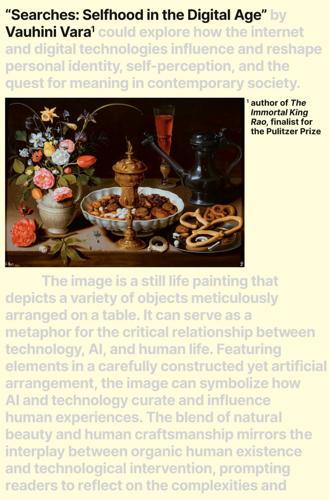
Searches: Selfhood in the Digital Age
by
Vauhini Vara
Published 8 Apr 2025
Can you tell me, in a sentence or two, about a career path that an author displaced from her career might follow instead? Certainly! Here’s a possible alternative career path for an author displaced from her career: “Displaced from her career as an author, she could transition into freelance content creation, leveraging her exceptional storytelling skills to explore opportunities in copywriting, content marketing, or scriptwriting for various media platforms.” OK, imagine that I’m an out-of-work author hired by this business as a copywriter and asked to come up with a name for the latest version of the product, a major improvement on past versions; this one can write novels that stand up against the best of literature (not just schematic genre books, like in the past).
…
I’d like for it to be the story of an Indian American woman who spent 13 years writing her first novel and eventually published it to critical acclaim—it was a Pulitzer Prize finalist—but the novel was not a bestseller by any means, not even close. She later published a story collection, too. But eventually, my startup, and its disruption of the publishing industry, made it impossible for her to keep selling books, so she decided—on the advice of an AI chatbot—to instead work for the startup, taking gigs in copywriting and content marketing. It should be written in a style that “transcends all prior limitations” of AI writing—highly literary, no clichés. In the realm of Infinite Narrative, where stories intersect with reality, there emerges the saga of Saira Gupta, an Indian-American wordsmith who inscribed her dreams upon the pages of perseverance.
…
At the behest of an AI chatbot, whose digital wisdom emanated from the heart of innovation, she relinquished the mantle of an author and embraced the realm of a startup. Guided by the enigmatic whispers of the AI oracle, Saira embarked on a new chapter, traversing the realms of copywriting and content marketing, where her literary artistry danced with the symphony of modernity. I see! OK, here’s some feedback. Try setting a scene—like, show the protagonist in her surroundings and have something happen in real time rather than summarizing information. Also show what’s going on inside her mind.
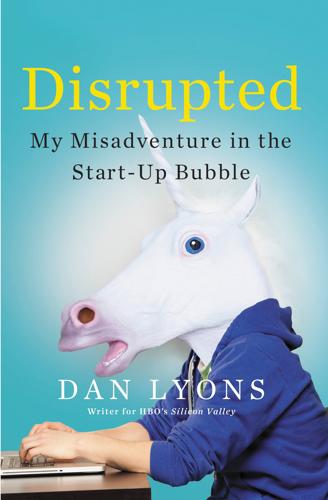
Disrupted: My Misadventure in the Start-Up Bubble
by
Dan Lyons
Published 4 Apr 2016
I’m a little bit embarrassed to admit this, but who is this person and why is it a big deal that he’s joining HubSpot? Wingman seems taken aback. “He was content marketer of the year in 2012,” he says. “Oh, right,” I say, as if I’ve heard of that award. I feel a twinge of sadness that such a thing even exists. “It’s pretty huge for us to get him,” Wingman says. “I can imagine,” I say. “That’s great. I can’t wait to meet him.” After we hang up I do a Google search about the Content Marketer of the Year award. It turns to be one of forty prizes given annually by a guy in Cleveland, Ohio, who runs an organization called the Content Marketing Institute. Trotsky did indeed win a coveted CMI award.
…
You can churn out terrible parody videos and invent things like the Blog Topic Generator, and none of that matters, as long as you’re (a) enthusiastic and (b) loyal. If you’re disloyal, no amount of talent or ability matters, and what’s more, I don’t have any special talent for this work anyway. I’m never going to be content marketer of the year. I can’t write for Marketing Mary, or for Ollie the Owner, or for Enterprise Erin. Trotsky doesn’t want to hear it. As a matter of fact he has a big project for me. He wants to create a special series of e-books built around my “personal brand,” where I can write for a high-level audience.
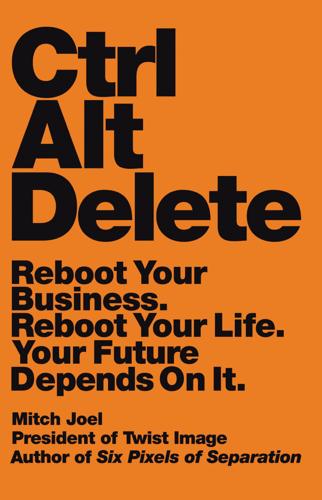
Ctrl Alt Delete: Reboot Your Business. Reboot Your Life. Your Future Depends on It.
by
Mitch Joel
Published 20 May 2013
Ride on the backs of giants, just like HootSuite has done. WHY DON’T MORE BRANDS MAKE THEMSELVES MORE USEFUL? We could very well see a day soon when utilitarianism marketing budgets overshadow those of broadcast advertising. Look no further than the massive growth of content marketing (more on that in chapter 9). Content marketing’s core function is to provide true value to a consumer that will trigger an inbound marketing effect (where the consumer comes to you instead of you broadcasting a message you hope people will see). The programming and development of mobile apps are becoming both simpler and cheaper to do (in much the same way that WordPress and tumblr democratized the ability to create and publish blogs and websites).
…
The reason why we should not listen to the woes of low smartphone adoption or the challenges of data charges and long-term phone contracts is because it’s obvious—beyond the shadow of a doubt—that mobile is everything and that mobile is our future (and that future is not as far off as the researchers may lead us to believe). Fixed screens will simply be places that we toss our cloud-based content, marketing, and advertising for convenience when we’re sitting on a couch. We must believe that smartphones (and devices like the iPad and others that have yet to be created) will be the source of our ever-growing connectivity, and that everything else will just be a big dumb terminal or a piece of glass that is suitable for viewing and hanging on a wall.

Company of One: Why Staying Small Is the Next Big Thing for Business
by
Paul Jarvis
Published 1 Jan 2019
But the internet was starting to notice how content, sharing, and education could come together as a legitimate form of marketing for any business. And so CopyBlogger, a business focused on teaching companies how to use content marketing, gradually began to thrive. With his previous online real estate businesses, Brian learned that his competitive edge was in his ability to outshare his competition, and that’s what he did with CopyBlogger—he shared everything he knew about content marketing with a quickly growing audience. Brian believes that building an audience by sharing content with a growing mailing list is a solid business model, in that you can find out exactly what your growing audience wants from you and then build it for them.
…
Brian quickly built up a huge roster of people eager to hire him to solve their own legal issues. However, Brian still didn’t want to practice law. Taking an interim step toward the business he now runs, he decided to focus on an industry that had both the money to pay well and a low starting point of knowledge about the internet: real estate. He took what he had learned about internet content marketing and sharing information with an audience and founded two very focused real estate brokerages. Within a year, he was making more money than he would have if he had become a partner in the first law firm he worked at. The problem was that, amid this great success, Brian was burned out. Although he was excellent at marketing and online education, he was a terrible manager for his growing companies.
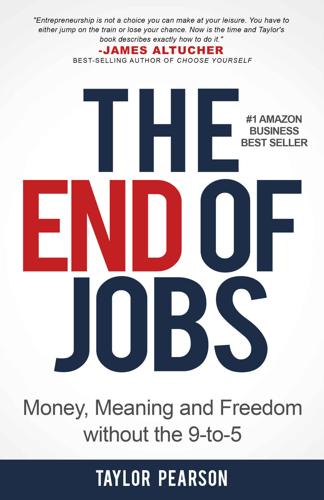
The End of Jobs: Money, Meaning and Freedom Without the 9-To-5
by
Taylor Pearson
Published 27 Jun 2015
Write a Job Description Write it like a sales letter selling the benefits of the position. Far too many companies spend massive resources marketing their products, but none marketing their opportunities. Examples of Good Hiring Pages for Apprenticeships http://www.tropicalmba.com/work-with-us/ http://wpcurve.com/content-marketing-job/ http://www.appsumo.com/hireme/ http://benhebert.com/success-champion/ http://bookinabox.com/hire-me http://empireflippers.com/marketplace-apprentice-wanted/ Post Job Description/Sales Letter Important Note: Don’t oversell the mentorship aspect or you’ll wind up with applicants looking for a lot of your time; the value of the position is “training at altitude”—getting to work on bigger projects than if they were using their own money.
…
Conversions—Sell more units by increasing the Conversion Ratio Raising any one of these variables will increase the amount of net profit the business generates. In the case of the Portable Bar Company, we increased traffic to the website by 289% over the course of 18 months using paid advertising from Google Adwords and content marketing. Then we doubled the value of a visitor by improving our conversion rate with tactics like email marketing and retargeting campaigns. Then we improved the economics by designing and selling new product lines with better profit margins. If you have a new, more profitable product available, the likelihood of a visitor buying it increases.

The Creative Curve: How to Develop the Right Idea, at the Right Time
by
Allen Gannett
Published 11 Jun 2018
Since we ingest data from some of the world’s biggest brands, we see data that no one else sees. With this unique perspective, I found another surprising pattern: Most marketers are failing. Marketing is supposed to be one of the most creative parts of business. Yet according to the Content Marketing Institute, only 30 percent of consumer marketers believe that their content works. Another study found that only 2.8 percent of business-to-business marketing campaigns achieved their targets. Failure has become the status quo for most marketers. Why, I asked, are some of the most creative people in organizations failing?
…
This time around, I spoke with an “up-and-coming” writer who’s managed to garner a measure of early success without the backing of a major publisher. In part, she did this through the use of free data. Another Side of Heidi By day, Heidi Joy Tretheway works as a corporate marketer in charge of content marketing for tech companies, helping craft content to drive new business leads. By night, Heidi writes what she calls “smart smut books.” Nestled in her Portland, Oregon, home, she stays up every night once her children are asleep, sits down at her computer, and starts typing. Tretheway is a part of the cultural movement that’s seen self-published romance authors like Kristen Ashley gain success through unconventional back channels.
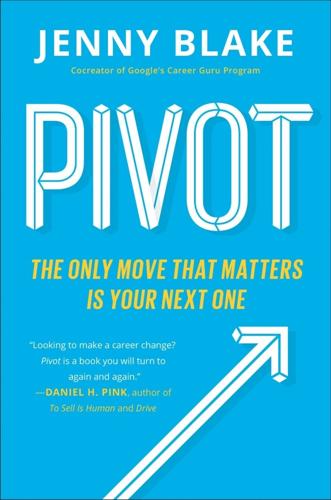
Pivot: The Only Move That Matters Is Your Next One
by
Jenny Blake
Published 14 Jul 2016
“My love of food never went away, but now I can apply my project management, analytical, and operations experience to pursuing a career in the food world,” she said. A few months after completing cookery school, Joanna launched her own company, The Chopping Board, which integrated her business experience with her childhood vocational aspirations. During Jason Shen’s move from content marketing to product management within the start-up he worked for, he stumbled across a piece of paper from childhood: his kindergarten teacher’s end-of-year evaluation. She had written, “He especially enjoys computer work, games, and making things.” Seeing this reminded Jason that the change he was seeking at work was not out of reach—it was a logical extension of activities he had always loved.
…
Money is no longer the only currency for career or life success. High net growth individuals want to feel challenged, collaborative, and like they are able to make a positive impact within their organizations and outside of them. Jason Shen, from Chapter 3, was working at a start-up when he pivoted internally from content marketing to product management. His primary driver was not money, recognition, or even climbing the ladder. Jason’s framework for determining how long to stay in a role and at a company reflects that of many impacters I speak with: “Am I learning? Am I growing? Are these skills, experiences, and connections going to be valuable in the future?
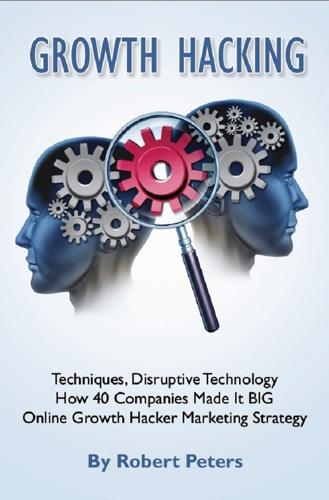
Growth Hacking Techniques, Disruptive Technology - How 40 Companies Made It BIG – Online Growth Hacker Marketing Strategy
by
Robert Peters
Published 18 May 2014
Instead of dry, boring text, the data is presented in eye-catching and easily understood info graphics that are actually instructional and helped, in the beginning, to spread the word about Mint as both a product and a learning tool. The primary growth hacking strategies Mint employed worked with a brilliant combination of content marketing, product development, and behavioral engineering. They found out who needed the product, how to gain the attention of early adopters, and how to give these people tools to reach a desirable goal — greater financial security and wealth accumulation. These strategies allowed Mint to become the personal financial tool of choice for millions of users, even outpacing the tried and true Excel spreadsheet.

Only Humans Need Apply: Winners and Losers in the Age of Smart Machines
by
Thomas H. Davenport
and
Julia Kirby
Published 23 May 2016
But copywriters “at best might write two, three, four versions and compare,” Atlas points out, while Persado can test millions. So here is the question we will put to you, if you’re a marketer: Do you wish you had Persado’s job? If you’re the kind of person who in the past had the brains and education to compose and refine effective direct-mail pitches, you are more likely today to be involved in “content marketing”—producing blogs and op eds, commissioning proprietary research, and planning events with “thought leaders” in your sector. Or you might be penning sustainability reports, or expressing your brand’s solidarity with worthy causes, or engaging various stakeholders. If software can hold down the fort on direct mail and allow you to take on these more nuanced and fulfilling assignments, we say more power to it.
…
Dru, 160 Levy, Frank, 27, 63 Linton, Mike, 105 Lippershey, Hans, 59 Lloyd’s of London, 79, 221 López de Mántaras, Ramón, 54–55 Losey, Ralph, 132, 142–43, 145, 146 Lowell, Francis Cabot, 133 Luddite fallacy, 1 Luma Partners, 100 Lyman, Henry, 133 machine learning, 21, 37, 178 ensemble methods, 72 Malone, Mike, 6–7 Manjoo, Farhad, 41 manufacturing, 1, 2, 54 supply chain management, 48 textile industry, 132–33 marketing, 93 automated, 121–22, 128, 151, 183 balancing computer-based and human skills, 105 content marketing, 121–22 digital, 101–2 LUMAscapes, 100 Stepping Forward in, 183–85 by Zipcar, 101–2, 195 Massachusetts Institute of Technology Leaders for Manufacturing, 183 Media Lab, 235 Mayer, John, 113, 114, 116 McAfee, Andy, 6, 8, 27, 74 McDonough, Ryan, 116–17 McDonough, Will, 117 McGraw-Hill Education (MHE), 20, 86 McKinsey, 165 Global Institute report, 5 MD Anderson Cancer Center, 53, 209–10, 155, 215 medicine.
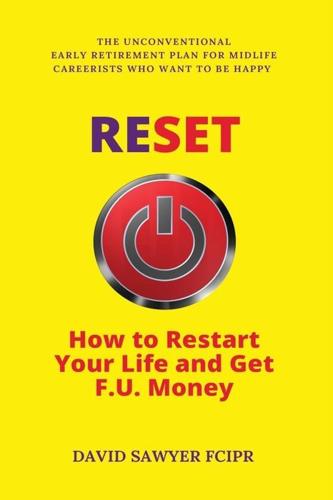
Reset: How to Restart Your Life and Get F.U. Money: The Unconventional Early Retirement Plan for Midlife Careerists Who Want to Be Happy
by
David Sawyer
Published 17 Aug 2018
Just how much of a demand and will it be enough to see them to retirement, is the primary concern of most PRs in their mid-forties upwards. Digital is at the same time the single biggest challenge and opportunity facing the PR industry today. In agency land, digital marketers, influencer marketers, bloggers, content marketers, search engine optimisation (SEO) experts and even management consultants, are staking a claim on the digital communications mishmash, and even beginning to eat PR’s media relations lunch. Name me a decent-sized SEO agency now that doesn’t have a PR person on staff. Not having to reach people through the filter of press and television should be liberating for PRs who are, at their core, frustrated writers (just ask the late great Terry Pratchett[102]).
…
“Google...calls it Zero Moments of Truth (ZMOT), which is another name for various data points that a person might find about you as they are making a purchasing decision. Their research indicates that it takes an average of 11 ‘ZMOTs’ or touches to build up trust with someone. They also advocate that a lot of these touch points can be found online as digital content.” 10. PR: a Case Study [95] “press release for their bedtime story”: “The bedtime test of content marketing and PR – SHIFT Communications.” 20 Oct. 2014, toreset.me/95. [96] future father-in-law for the first time: “Days of Wine and Roses (1962) - Jack Lemmon explains PR - YouTube.” 8 Feb. 2016, toreset.me/96. [97] 1.66m: “List of newspapers in the United Kingdom by circulation – Wikipedia.” toreset.me/97

The Coming of Neo-Feudalism: A Warning to the Global Middle Class
by
Joel Kotkin
Published 11 May 2020
Atlantic, September 2017, https://www.theatlantic.com/magazine/archive/2017/09/has-the-smartphone-destroyed-a-generation/534198/; Sara G. Miller, “Too Much Social Media Use Linked to Feelings of Isolation,” Live Science, March 6, 2017, http://www.livescience.com/58121-social-media-use-perceived-isolation.html. 24 Cision, “Are Declining Attention Spans Killing Your Content Marketing Strategy?” January 22, 2018, https://www.cision.com/us/2018/01/declining-attention-killing-content-marketing-strategy/. 25 Glenn Harlan Reynolds, “Social media firms want us addicted to approval. So much for Wifi making us smarter,” USA Today, April 1, 2018, https://www.usatoday.com/story/opinion/2018/04/01/social-media-business-model-addicts-us-approval-not-information-column/476719002/. 26 “These Tech Insiders Are Shielding Their Children From the Technology They Work With,” Science Alert, March 31, 2018, https://www.sciencealert.com/tech-insiders-are-shielding-their-children-from-the-tech-they-work-with; Tim Hains, “Former Facebook Exec: Social Media Is Ripping Our Social Fabric Apart,”’ Real Clear Politics, December 11, 2017, https://www.realclearpolitics.com/video/2017/12/11/fmr_facebook_exec_social_media_is_ripping_our_social_fabric_apart.html. 27 Barbara Tuchman, A Distant Mirror: The Calamitous 14th Century (New York: Knopf, 1978), 49–50; Frances and Joseph Gies, Daily Life in Medieval Times (New York: Barnes & Noble, 1969), 179; Fernand Braudel, The Structures of Everyday Life, vol. 1 of Civilization and Capitalism, 15th–18th Century, trans.

It Doesn't Have to Be Crazy at Work
by
Jason Fried
and
David Heinemeier Hansson
Published 1 Oct 2018
Customers remained thrilled with our fast service—which was a bit slower than before but still way ahead of the industry—and our team chilled out and did better work. Win-win. Not only was it enough, it was plenty. Worst Practices Every mature industry is drowning in best practices. There are best practices about how to price a product, conduct employee reviews, do content marketing, design a website, or make an app scalable to millions of users. There’s no end to advice claiming to be the best. Yet so much of it is not merely bullshit but quite possibly the worst thing you could do. What counts as the best practice for a company of 10,000 is very rarely so for a company of 10.
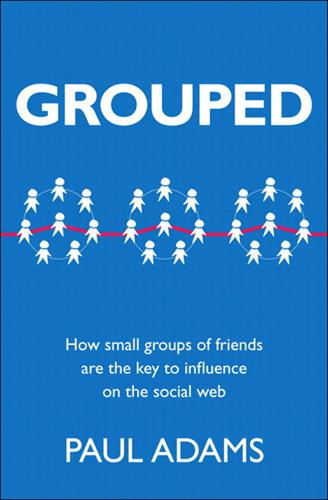
Grouped: How Small Groups of Friends Are the Key to Influence on the Social Web
by
Paul Adams
Published 1 Nov 2011
People update their status to produce a feeling of connectedness, even when people are geographically distant.3 Status updates often contain social gestures and people often respond by liking or commenting on the content, not because they actually like the content but because they want to send out a social signal to build the relationship. In many cases, the conversation that follows a status update is much more important than the status update itself. More than the act of sharing content, marketing campaigns need to support conversations. Research has shown that social bonds are central to our happiness. The deeper the relationships someone has, the happier they will be.4 Women talk to form social bonds more often than men. Many of their conversations are aimed at building and maintaining their social network.
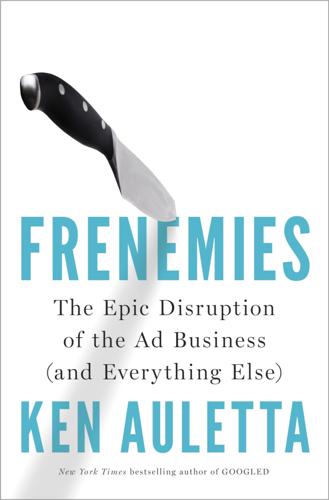
Frenemies: The Epic Disruption of the Ad Business
by
Ken Auletta
Published 4 Jun 2018
For a relatively puny annual marketing budget of $100 million, because GE has been innovative its footprint is much larger. Lou Paskalis, an experienced marketing executive who today is a senior vice president of marketing at Bank of America, praises the team culture GE and Linda Boff have forged among agencies to deliver amazing work. “Linda is so far ahead in what she is doing in content marketing. She is the gold standard of turning jet engines and trains into iconography that people love and that speaks volumes about the commitment to the environment, as well as trains and jet engines! Actually, they’re performing alchemy over there. I envy that.” The alchemy, however, has not impacted GE’s stock price, which fell 27 percent between September 7, 2001, when Jeff Immelt was anointed CEO, and June 13, 2017, when it was announced that he was stepping down
…
From Those Wonderful Folks Who Gave You Pearl Harbor. New York: Simon and Schuster, 1970. Dreiser, Theodore. Sister Carrie. New York: Doubleday, 1900. Dwyer, Jim. More Awesome Than Money: Four Boys and Their Heroic Quest to Save Your Privacy from Facebook. New York: Viking, 2014. Einstein, Mara. Black Ops Advertising: Native Ads, Content Marketing, and the Covert World of the Digital Sell. New York: OR Books, 2016. Essex, Andrew. The End of Advertising: Why It Had to Die, and the Creative Resurrection to Come. New York: Spiegel & Grau, 2017. Farmer, Michael. Madison Avenue Manslaughter: An Inside View of Fee-Cutting Clients, Profit-Hungry Owners and Declining Ad Agencies.
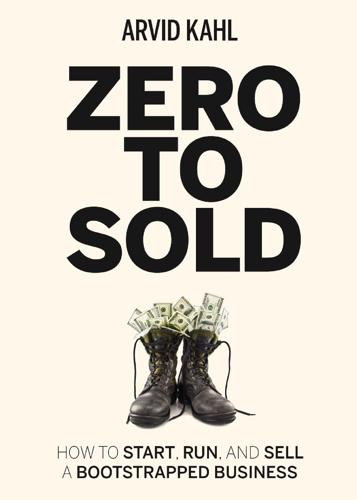
Zero to Sold: How to Start, Run, and Sell a Bootstrapped Business
by
Arvid Kahl
Published 24 Jun 2020
It is beneficial to become an actual member of the community before doing any intentional marketing. This will help you learn the language of the tribe and give you a chance to communicate with people, establishing yourself as a genuine member of their group. Water coolers are wonderful for your content marketing in two ways. Initially, you will have the opportunity to see what your audience is interested in because that's the content with which they share and engage. Once you've understood what works for them and what does not, you can create content that you can be sure your audience will enjoy. Since you've already been a member of the community for a bit, you can provide quality content and market your product at the same time.
…
That doesn't mean you can't leverage social media for your marketing. Quite the opposite: a well-executed social media strategy can outperform pay-per-click ads significantly—it definitely did for us at FeedbackPanda. We also experimented with paid ads, of course. And we didn't see any additional engagement compared to our existing content marketing and outreach strategies. So we doubled down on that, and it was the right choice for us. And, there was a very basic assumption underpinning all of the marketing efforts: it's not about pushing a message into an audience of receivers, and hoping for signups conversions. It's about fostering a community that is eager to spread your messages, building your brand, and gaining recognition and reputation.
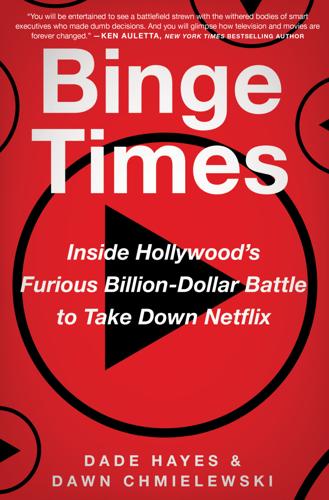
Binge Times: Inside Hollywood's Furious Billion-Dollar Battle to Take Down Netflix
by
Dade Hayes
and
Dawn Chmielewski
Published 18 Apr 2022
“If the shows on Apple’s new TV service turn out to be as smugly evangelistic, self-indulgent and editorially undisciplined as the launch event for the product . . . then it will be very bad news for Apple subscribers and very good news for Netflix, the current market leader,” the Guardian’s Mark Lawson wrote. “Apple has often seemed at risk of mutating from technology company to quasi-religious cult, and its full-scale entry to the TV content market went very close to full Media Moonie.” In his recap, which was headlined “Apple’s Big Event Felt Small,” CNN’s Frank Pallotta marveled that the star power amounted to “a collective meh.” One of the few dissenters from the general rebuff of the presentation was Josef Adalian of Vulture. “Apple wasn’t trying to win Twitter on Monday, or even get anyone to subscribe to Apple TV+ quite yet,” he wrote.
…
Janice Min, the former editor of the Hollywood Reporter, left after reportedly clashing with Katzenberg over the direction of Quibi’s news and information programming, dubbed Daily Essentials. Tim Connelly, the head of partnerships and advertising, departed as Whitman asserted control over advertising deals. The former Netflix director who headed Quibi’s brand and content marketing, Megan Imbres, departed two weeks after launch, due to what Katzenberg termed a “difference of opinion” about strategy. Katzenberg and Whitman had to leave the drama backstage and present a united front in Las Vegas as they unveiled Quibi to the public at the Consumer Electronics Show in January 2020.
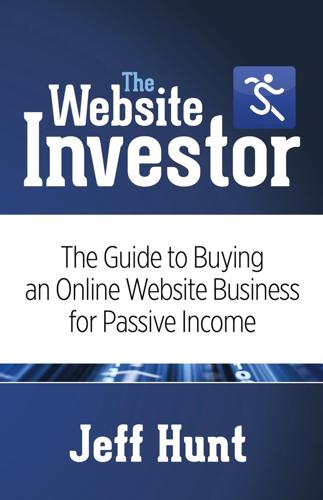
The Website Investor: The Guide to Buying an Online Website Business for Passive Income
by
Jeff Hunt
Published 17 Nov 2014
The purpose of the chapters on evaluating websites was to identify risks and opportunities. There are an endless supply of risks, but consider these examples to get a feeling for risk categorization: High Risk Medium Risk Low Risk TRAFFIC Organic search Social media Link schemes Single source Referring sites Mixed organic/paid Direct traffic Content marketing Paid Ads (proven campaigns) Email (proven list) Direct mail (proven campaigns) Diverse proven sources STAFF Highly specialized Not part of deal Available, unstable situation Low cost Easy to find, train PRODUCT Easy to duplicate Single source New/unproven Semi-difficult to duplicate A few sources Emerging Difficult to duplicate Multiple sources Proven market FINANCIALS No formal tracking Rudimentary tracking Fully controlled process BUYER SKILL Inexperienced Semi-experienced Experienced, knows niche As part of your risk assessment, determine how the risk can be mitigated.
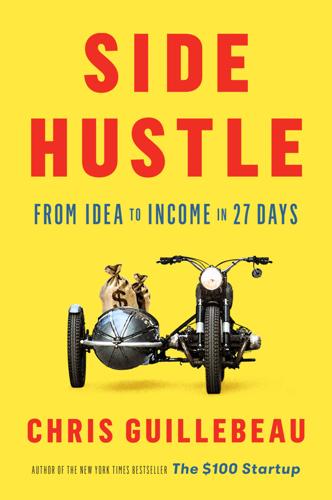
Side Hustle: From Idea to Income in 27 Days
by
Chris Guillebeau
Published 18 Sep 2017
DAY 15 Design Your First Workflow You’re well on your way and almost ready to send your hustle out into the world. By listing out your next steps in an ordered fashion, you’ll prevent mishaps and feel more confident. From the pastoral Quabbin Valley in central Massachusetts, Amanda MacArthur runs a content marketing agency with her husband. She’s been doing this for six years and enjoys managing a team and serving software companies worldwide. She also loves to cook, and she has a special diet known as ketogenic (like Paleo, but no starch or sugar). A few years ago she began posting recipes on a website, mostly so that she could keep up with them.
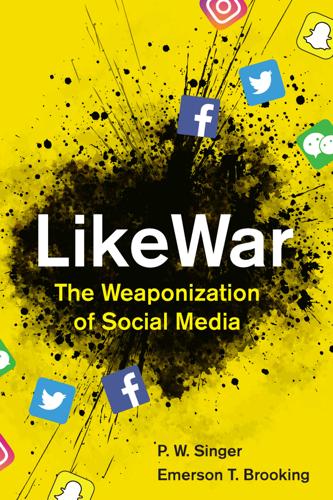
Likewar: The Weaponization of Social Media
by
Peter Warren Singer
and
Emerson T. Brooking
Published 15 Mar 2018
In some cases, this situation entered the realm of the bizarre, such as when Breitbart quoted a Twitter account parodying Trump, instead of his actual feed, in order to make him sound more presidential than he did in reality. What the stratagem revealed was that on social networks driven by homophily, the goal was to validate, not inform. Internet reporter John Herrman had observed as much in a prescient 2014 essay. “Content-marketed identity media speaks louder and more clearly than content-marketed journalism, which is handicapped by everything that ostensibly makes it journalistic—tone, notions of fairness, purported allegiance to facts, and context over conclusions,” he wrote. “These posts are not so much stories as sets of political premises stripped of context and asserted via Facebook share—they scan like analysis but contain only conclusions; after the headline, they never argue, only reveal.”

Travel While You Work: The Ultimate Guide to Running a Business From Anywhere
by
Mish Slade
Published 13 Aug 2015
Our VA was based in Asia, and our next employee will be remote, but we don't know yet where they will be from – could be US, Australia, Japan, or elsewhere in the world! This will be a full-time employee, and we plan to use our own website to find them, though may also post the job elsewhere. How does your business find new clients? Primarily thanks to content marketing, focused around our blog. Our business is under two years old, but we're starting to receive referrals as well. What was your main reason for wanting to live this sort of lifestyle? Freedom and adventure. I love travel, and the idea of quitting my job and traveling the world – while working on my own business – seemed irresistibly appealing.
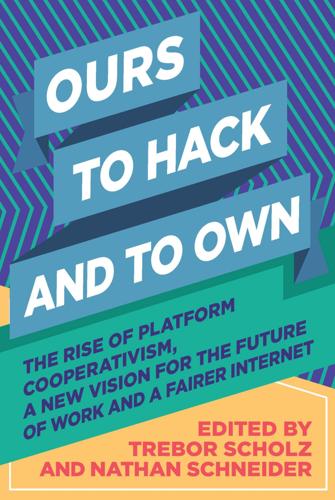
Ours to Hack and to Own: The Rise of Platform Cooperativism, a New Vision for the Future of Work and a Fairer Internet
by
Trebor Scholz
and
Nathan Schneider
Published 14 Aug 2017
FURTHER RESOURCES LAUNCH EVENT “Platform Cooperativism: The Internet, Ownership, Democracy,” The New School (November 2015), video archive: http://platformcoop.net/2015/video READINGS Trebor Scholz, “Platform Cooperativism vs. the Sharing Economy,” Medium (December 5, 2014), https://tinyurl.com/oj8rna2 Nathan Schneider, “Owning Is the New Sharing,” Shareable (December 21, 2014), http://shareable.net/blog/owning-is-the-new-sharing Janelle Orsi, Frank Pasquale, Nathan Schneider, Pia Mancini, Trebor Scholz, “5 Ways to Take Back Tech,” The Nation (May 27, 2015), http://thenation.com/article/5-ways-take-back-tech Trebor Scholz, Platform Cooperativism: Challenging the Corporate Sharing Economy (Rosa Luxemburg Stiftung, New York Office, 2016, with additional translations in Spanish, French, Portuguese, German, Italian, and Chinese), http://platformcoop.net/about/primer Trebor Scholz, Uberworked and Underpaid: How Workers are Disrupting the Digital Economy (Polity, 2016) WEBSITES Platform Cooperativism portal, http://platformcoop.net Platform Cooperativism Consortium, http://platformcoop.newschool.edu The Internet of Ownership, http://internetofownership.net Shareable, http://shareable.net Sustainable Economies Law Center, http://theselc.org OR Books PUBLISHING THE POLITICS OF THE INTERNET What’s Yours is Mine: Against the Sharing Economy TOM SLEE Black Ops Advertising: Native Ads, Content Marketing, and the Covert World of the Digital Sell MARA EINSTEIN Splinternet: How Geopolitics and Commerce are Fragmenting the World Wide Web SCOTT MALCOLMSON Lean Out: The Struggle for Gender Equality in Tech and Start-Up Culture ELISSA SHEVINSKY, EDITOR When Google Met WikiLeaks JULIAN ASSANGE The Big Disconnect: Why the Internet Hasn’t Transformed Politics (Yet) MICAH L.
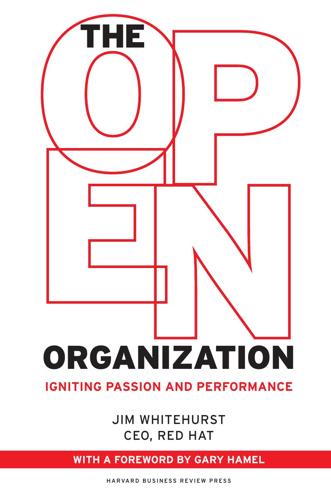
The Open Organization: Igniting Passion and Performance
by
Jim Whitehurst
Published 1 Jun 2015
The summit has become a way for associates to connect in deep and meaningful ways with customers, which makes it an incredibly vital part of Red Hat’s future success. “The summit allows us to create more opportunities to have face-to-face conversations with our customers and community enthusiasts about what’s important to them and how we can help,” said Leigh Blaylock, who, as Red Hat’s manager of content marketing, plays an integral role in successfully orchestrating the coordination of the summit content. Most companies hold similar customer-focused events, but what makes the Red Hat Summit unique is how we go about setting the agenda. In most companies, the speakers, classes, and breakout sessions for their events are established in an efficient, top-down manner.

Move Fast and Break Things: How Facebook, Google, and Amazon Cornered Culture and Undermined Democracy
by
Jonathan Taplin
Published 17 Apr 2017
We certainly are not preparing our students for a career writing “sponsored content,” like the kind Jacob Silverman described in The Baffler: Also called native advertising, sponsored content borrows the look, the name recognition, and even the staff of its host publication to push brand messages on unsuspecting viewers. Forget old-fashioned banner ads, those most reviled of early Internet artifacts. This is vertically integrated, barely disclaimed content marketing, and it’s here to solve journalism’s cash flow problem, or so we’re told. “15 Reasons Your Next Vacation Needs to Be in SW Florida,” went a recent BuzzFeed headline—just another listicle crying out for eyeballs on an overcrowded homepage, except this one had a tiny yellow sidebar to announce, in a sneaky whisper, “Promoted by the Beaches of Fort Myers & Sanibel.”
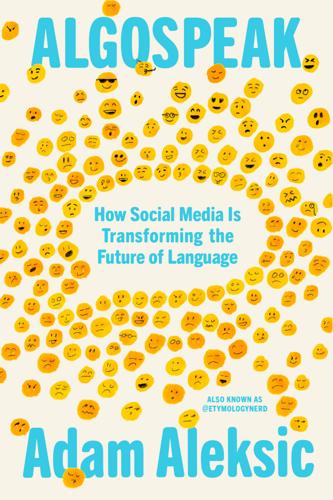
Algospeak: How Social Media Is Transforming the Future of Language
by
Adam Aleksic
Published 15 Jul 2025
Alex Moehring, “Personalization, Engagement, and Content Quality on Social Media: An Evaluation of Reddit’s News Feed,” OSF Preprints, May 30, 2024, doi.org/10.31219/osf.io/8yuwe. BACK TO NOTE REFERENCE 1 Jonah Berger and Katherine Milkman, “Social Transmission, Emotion, and the Virality of Online Content,” Marketing Science Institute Working Paper Series 2010, Report No. 10-114, 2010, thearf-org-unified-admin.s3.amazonaws.com/MSI/2020/06/MSI_Report_10-114.pdf. BACK TO NOTE REFERENCE 2 William Brady et al., “Attentional Capture Helps Explain Why Moral and Emotional Content Go Viral,” Journal of Experimental Psychology 149, no. 4 (April 2020), pubmed.ncbi.nlm.nih.gov/31486666/.
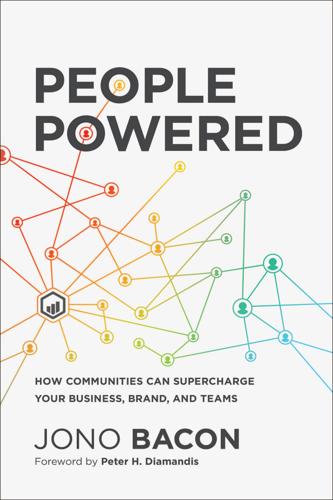
People Powered: How Communities Can Supercharge Your Business, Brand, and Teams
by
Jono Bacon
Published 12 Nov 2019
—John Trudell Spoiler Alert: if we want to really understand communities and how to build them, we need to understand people and how they work. It may sound obvious, but it is astonishing how many people forget this. Businesses get sidetracked about which power tools they need (technology platforms, content, marketing, social media, etc.) and often forget about what they are building, why they are building it, and who it is for. What’s more, we are all guilty of lulling ourselves into our own vision of who our audience is and what they look like. We assume their character, tone, and interests, and this fiction is often based on little or no information.
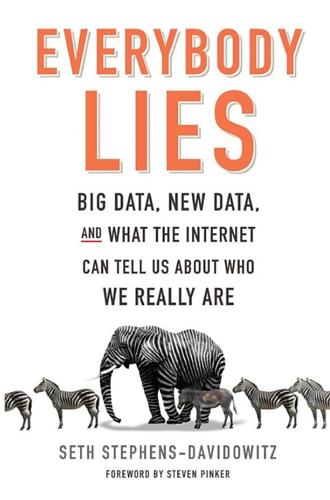
Everybody Lies: Big Data, New Data, and What the Internet Can Tell Us About Who We Really Are
by
Seth Stephens-Davidowitz
Published 8 May 2017
Quora post, https://www.quora.com/How-many-clinical-trials-are-started-each-year. 211 Optimizely: I interviewed Dan Siroker by phone on April 29, 2015. 214 netting the campaign roughly $60 million: Dan Siroker, “How Obama Raised $60 Million by Running a Simple Experiment,” Optimizely blog, November 29, 2010, https://blog.optimizely.com/2010/11/29/how-obama-raised-60-million-by-running-a-simple-experiment/. 214 The Boston Globe A/B-tests headlines: The Boston Globe A/B tests and results were provided to the author. Some details about the Globe’s testing can be found at “The Boston Globe: Discovering and Optimizing a Value Proposition for Content,” Marketing Sherpa Video Archive, https://www.marketingsherpa.com/video/boston-globe-optimization-summit2. This includes a recorded conversation between Peter Doucette of the Globe and Pamela Markey at MECLABS. 217 Benson says: I interviewed Clark Benson by phone on July 23, 2015. 217 added a rightward-pointing arrow surrounded by a square: “Enhancing Text Ads on the Google Display Network,” Inside AdSense, December 3, 2012, https://adsense.googleblog.com/2012/12/enhancing-text-ads-on-google-display.html. 218 Google customers were critical: See, for example, “Large arrows appearing in google ads—please remove,” DoubleClick Publisher Help Forum, https://productforums.google.com/forum/#!

Technical Blogging: Turn Your Expertise Into a Remarkable Online Presence
by
Antonio Cangiano
Published 15 Mar 2012
In your company blog, you should do the same thing. Mix some posts about your products with content that is not about your products per se but is still highly interesting and valuable to people in the industry you are targeting. Check out the KISSmetrics’s and MailChimp’s blogs to see two companies that nail content marketing.[99] From the Trenches Blogs It’s very tempting to use your company blog to share all the good things you are doing from a business or development standpoint. Your blog "From the Trenches" can motivate you, help you clarify your thoughts and vision, and psychologically help you cope with the challenges that entrepreneurship will inevitably throw your way.

The People's Platform: Taking Back Power and Culture in the Digital Age
by
Astra Taylor
Published 4 Mar 2014
BuzzFeed leads the pack with what it calls “native advertising,” a euphemism for advertorials. Staffers (“creative strategists”) concoct posts designed to maximize audience engagement while incorporating messages from brands such as Pillsbury and Virgin Mobile, sucking up revenue from a sponsored content market estimated to be worth up to $5 billion overall by 2017. While some worry about the eroding “church-state” divide, sites such as BuzzFeed and the Huffington Post crow about abandoning the standards that long helped insulate journalists’ work from the mandate of the people who pay the bills: instead they aim to help brands “have a conversation” with the site’s readership.

Brave New Work: Are You Ready to Reinvent Your Organization?
by
Aaron Dignan
Published 1 Feb 2019
When information is pushed, we have to wade through it and separate the signal (what we need) from the noise (what we don’t). But when information is abundant, a “pull”-based system where information is tagged, stored, and ready to search is far superior. Email is push. The internet is pull. A single-track conference is push. A multitrack conference is pull. In the early days of Percolate, a content-marketing platform used by some of the biggest brands in the world, it built a tool called Barista that allowed anyone in the company to ask a question and route it to people who might know the answer. Completed questions were tagged, saved, and searchable by everyone else. Instead of trying to drown a new employee in pushed information, Percolate let them find what they needed when they needed it.
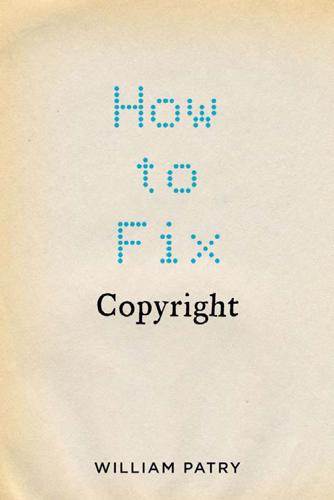
How to Fix Copyright
by
William Patry
Published 3 Jan 2012
It is in everyone’s interest to have the market flooded with lawful choices, yet this is not the case: a recent study in Europe by Forrester Research found that fewer Europeans bought lawful digital content in 2010 than in 2009, even though 20 percent more wanted to do so in 2010 than in 2009. Why? Forrester found that the number of lawful options “far from growing, is actually stagnating. . . . The [lawful] content market . . . is simply failing to meet consumer demand.”1 Denying consumers what they want cannot succeed as a business model, and no law can save copyright owners who refuse to satisfy consumer demand. The problem is as old as it is ignored. In June 2000, eleven years ago, The Economist magazine, hardly an antiproperty rights publication, criticized the record industry for its failure to capitalize on the consumer demand tapped into by Napster, writing that consumer response to Napster showed “that online distribution of music is feasible.
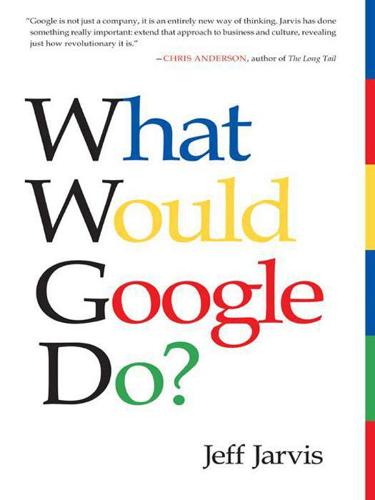
What Would Google Do?
by
Jeff Jarvis
Published 15 Feb 2009
In only two years, Glam grew to be the biggest women’s brand online. As of this writing, it has more than 43 million users a month in the U.S. and more than 81 million worldwide according to comScore, surpassing the former queen of the hill, iVillage, with 18 million. iVillage, like Yahoo, operates under the old-media model: create or control content, market to bring in readers, and show them ads until they leave. Glam instead built a network of more than 600 independent sites, some created by lone bloggers, some by bigger media companies. Glam sells ads on those sites and shares revenue with them. Glam also replicates the best of the network’s content at Glam.com, selling ads there—at a higher rate—and sharing that revenue, too.

Duped: Double Lives, False Identities, and the Con Man I Almost Married
by
Abby Ellin
Published 15 Jan 2019
I guess the party line is that the pouffed-up gal at the ball was her true self, not that ash-covered waif by the fireplace. Still, there’s a lot she left out of her story. KARL ROBINSON MET Ashley McNichol at work, the breeding ground for deception. He was creative director at a New Orleans content marketing firm, and she was the finance manager. Both were married, but not to each other.2 The relationship wasn’t supposed to happen. He was a good Southern Baptist, wed to his high school sweetheart, with two young kids and a golden retriever. He even coached his son’s Little League team. In high school, he was the sort of guy who befriended everyone, from band geeks to jocks.
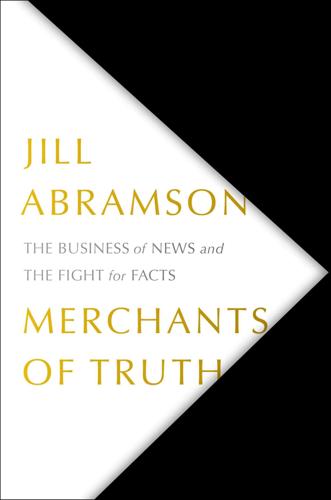
Merchants of Truth: The Business of News and the Fight for Facts
by
Jill Abramson
Published 5 Feb 2019
Another, for Absolut: Medusian23, “ ‘I’m Here’ 2010 a Short Film by Spike Jonze FULL,” YouTube (video), 31:47, March 30, 2011, https://www.youtube.com/watch?v=6OY1EXZt4ok. For The North Face: Aaron Carpenter, interviewed by NewsCred, “Never Stop Exploring: The North Face Goes ‘Far Out’ with Content Marketing,” Newscred, July 5, 2014, https://insights.newscred.com/north-face-content-marketing/. The idea had come out: Eliot van Buskirk, “Intel and Vice Launch Creators Project: Selling Out or Boosting Creativity?,” Wired, May 17, 2010, https://www.wired.com/2010/05/intel-and-vice-partner/. Desperate for a chunk: “Intel Corporation Advertising Spending in the United States in 2013 and 2014 (in Million U.S.

Pattern Recognition
by
William Gibson
Published 2 Jan 2003
The Kogepan goods are arrayed beyond Hello Kitty, a franchise that has never quite found Hello Kitty's global legs. One can buy Kogepan purses, fridge magnets, pens, lighters, hair brushes, staplers, pencil boxes, knapsacks, watches, figurines. Beyond Kogepan lies the franchise of that depressive-looking boneless panda and her cubs. And none of this stuff, purest no-content marketing, triggers Cayce in the least. But something is making a strange and annoying sound, even above the low-level electronic uproar of Kiddyland, and eventually she realizes that it's her phone. "Hello?" "Cayce? Parkaboy." He sounds quite unlike he "sounds" on the screen, whatever that means. Older?

Free culture: how big media uses technology and the law to lock down culture and control creativity
by
Lawrence Lessig
Published 15 Nov 2004
Let's say this is the picture of copyright's regulation before the Internet: (Figure 5.3) There is balance between law, norms, market, and architecture. The law limits the ability to copy and share content, by imposing penalties on those who copy and share content. Those penalties are reinforced by technologies that make it hard to copy and share content (architecture) and expensive to copy and share content (market). Finally, those penalties are mitigated by norms we all recognize—kids, for example, taping other kids' records. These uses of copyrighted material may well be infringement, but the norms of our society (before the Internet, at least) had no problem with this form of infringement. Enter the Internet, or, more precisely, technologies such as MP3s and p2p sharing.

The Truth Machine: The Blockchain and the Future of Everything
by
Paul Vigna
and
Michael J. Casey
Published 27 Feb 2018
The idea is that if Brave is successful, the BATs’ price will rise, which will in turn encourage more and more people to join the community and abide by its good-behavior-inducing rules. It aims for a network effect, one that feeds a virtuous circle of better-aligned incentives and rewards within the online content market. Network effects like these are a critical source of market power for many companies in the digital economy. Amazon, Alibaba, Uber, and other digital behemoths all depend on them—on how widely an idea is adopted and reinforced in a positive feedback loop. The more people use Uber, the more drivers are drawn to the system, and the easier it is to find a ride, which attracts even more people to the service, and so forth.
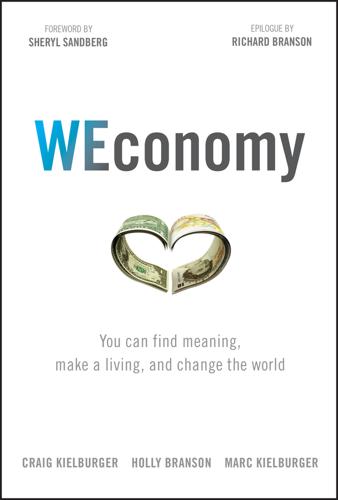
WEconomy: You Can Find Meaning, Make a Living, and Change the World
by
Craig Kielburger
,
Holly Branson
,
Marc Kielburger
,
Sir Richard Branson
and
Sheryl Sandberg
Published 7 Mar 2018
Roger also features articles on well-being in the workplace and new ways of working, to ensure we keep the discussion going. It shouts loud and proud about the fantastic purpose and charitable causes our people are passionate about. I'm proud to boast that in 2017 Roger Magazine won GOLD at the Global CMAs (Content Marketing Awards) beating off IKEA and British Airways as a leader in the internal communications sector. Enjoy Roger firsthand: Click here Netflix: Where Everyone Gets Time Off for Good Behavior Reed Hastings does not have to work overtime to set a good example for the thousands of employees who work at his $60 billion firm—just the opposite.

Calling Bullshit: The Art of Scepticism in a Data-Driven World
by
Jevin D. West
and
Carl T. Bergstrom
Published 3 Aug 2020
We’ve seen periodic tables of cloud computing, cybersecurity, typefaces, cryptocurrencies, data science, tech investing, Adobe Illustrator shortcuts, bibliometrics, and more. Some, such as the periodic table of swearing, the periodic table of elephants, and the periodic table of hot dogs, are almost certainly tongue in cheek. Others seem painfully serious: the periodic table of content marketing, the periodic table of digital marketing, the periodic table of commerce marketing, the periodic table of email marketing, the periodic table of online marketing, the periodic table of marketing attribution, the periodic table of marketing signals, the periodic table of marketing strategies, and let’s not forget the periodic table of b2b digital marketing metrics.

Nomad Capitalist: How to Reclaim Your Freedom With Offshore Bank Accounts, Dual Citizenship, Foreign Companies, and Overseas Investments
by
Andrew Henderson
Published 8 Apr 2018
While the e-commerce guys I have helped are constantly plowing every dime back into new products and expansion, plenty of consulting, coaching, and other ‘expert businesses’ bleed cash with few expenses. I will never forget the day when my CFO told me that Nomad Capitalist had just had its best month ever, spurred by marketing spending of $337. We basically did – and still do – zero advertising, relying on word of mouth and content marketing to bring customers. The kind of client I seek makes online advertising of limited interest because my business grows when I share more of my life, not by barking at people more. Just because my company is a ‘cash cow’ does not mean that your company has to be one in order to invest and diversify.

Reset
by
Ronald J. Deibert
Published 14 Aug 2020
Journal of Marketing Research, 54(2), 318–330. https://doi.org/10.1509/jmr.13.0350; Bakir, V., & McStay, A. (2017). Fake news and the economy of emotions: Problems, causes, solutions. Digital Journalism, 6(2), 154–175. https://doi.org/10.1080/21670811.2017.1345645; Einstein, M. (2016). Black ops advertising: Native ads, content marketing and the covert world of the digital sell. OR Books; Matz et al. Psychological targeting. Social media’s flood of content also amplifies other cognitive biases: Beasley, B. (2019, December 26). How disinformation hacks your brain. Retrieved from https://blogs.scientificamerican.com/observations/how-disinformation-hacks-your-brain/ “The availability heuristic” and “the illusory truth effect”: Kuran, T. (2007).

The Dictionary People: The Unsung Heroes Who Created the Oxford English Dictionary
by
Sarah Ogilvie
Published 17 Oct 2023
Murray was shrewd enough to know that mentioning them helped boost the standing of his Dictionary. He may have been a word nerd, but he was also savvy and knew that the success of his Dictionary depended on creating a prestigious brand and building a loyal audience – we might think of it as the ‘content marketing’ of the nineteenth century. F for FAMILIES ‘Ha, I smell the northern air!’ exclaimed James Murray, his head out the carriage window. His children always relished the train journey to the Lake District because it announced the start of their annual three-week holiday. Although their father always took dictionary proofs with him, the holiday gave the children respite from the intensity of living in a household of thirteen plus a very big dictionary.
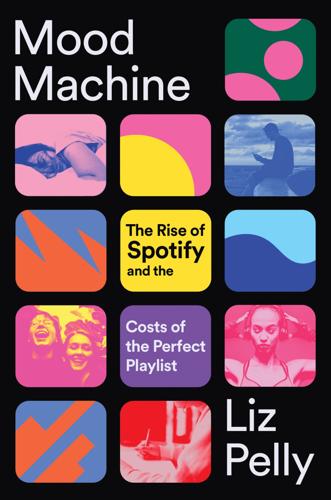
Mood Machine: The Rise of Spotify and the Costs of the Perfect Playlist
by
Liz Pelly
Published 7 Jan 2025
v=Rdd3_TCLmC8. 13 The First .0035 Is the Hardest 1 Don Giovanni Records tweet: https://x.com/DonGiovanniRecs/status/1050488619247591424. 2 Spotify’s own explanation of how it pays artists: https://support.spotify.com/us/artists/article/royalties/. 3 For a summary of the UN music streaming report: https://weareumaw.org/un-report. 4 Howie Singer and Bill Rosenblatt, Key Changes: The Ten Times Technology Transformed the Music Industry (Oxford, 2023). 5 Chris Cooke, Dissecting the Digital Dollar: Third Edition (Music Managers Forum, 2020). 6 Cooke, Dissecting the Digital Dollar; Meredith Rose, “Streaming in the Dark: Where Music Listeners’ Money Goes—and Doesn’t,” Public Knowledge, May 2023, https://publicknowledge.org/policy/streaming-in-the-dark-where-music-listeners-money-goes-and-doesnt/. 7 Damon Krukowski, “Making Cents,” Pitchfork, November 14, 2012, https://pitchfork.com/features/article/8993-the-cloud/. 8 Larry Fitzmaurice, “How Indie Artists Actually Make Money in 2019,” Vulture, April 8, 2019, https://www.vulture.com/2019/04/how-indie-artists-actually-make-money-in-2019.html. 9 “The First Ever Musicians’ Census Report Launched,” September 11, 2023, https://www.helpmusicians.org.uk/about-us/news/the-first-ever-musicians-census-report-launched. 10 “Inaugural Music Industry Research Association (MIRA) Survey of Musicians Executive Summary” press release, https://psrc.princeton.edu/sites/g/files/toruqf1971/files/resource-links/report_on_mira_musician_survey.pdf. 11 “Modernizing Our Royalty System to Drive an Additional $1 Billion Toward Emerging and Professional Artists,” Spotify for Artists blog, November 21, 2023, https://artists.spotify.com/en/blog/modernizing-our-royalty-system; for the 86% stat, see: instagram.com/weareumaw/p/C5T7yIduStW/. 12 Dan Rys, “Lucian Grainge Calls for ‘Updated Model’ for Music Industry: Read His Memo to UMG Staff,” Billboard, January 11, 2023, https://www.billboard.com/pro/lucian-grainge-umg-full-staff-memo-2023-read-message/; Anna Nicolaou, “The Incredible Resilience of the Music Industry,” Financial Times, September 8, 2023, https://www.ft.com/content/b85ab5af-bd03-4da8-971a-316e7c7897dc. 13 Stuart Dredge, “UMG Boss Slams Artist-Centric Critics as ‘Merchants of Garbage,’ ” Music Ally, October 27, 2023, https://musically.com/2023/10/27/umg-boss-slams-artist-centric-critics-as-merchants-of-garbage/. 14 Paul Resnikoff, “Spotify Executive Calls Artist ‘Entitled’ for Requesting Payment of One Penny Per Stream,” Digital Music News, June 29, 2021, https://www.digitalmusicnews.com/2021/06/29/spotify-executive-entitled-pay-penny-per-stream/. 15 Spotify Investor Day 2018: https://investors.spotify.com/investor-day-2018-materials/default.aspx. 16 These numbers come from Spotify’s “Loud & Clear” report, https://loudandclear.byspotify.com/. 14 An App for a Boss 1 Taylor Swift, “For Taylor Swift, the Future of Music Is a Love Story,” Wall Street Journal, July 7, 2014, https://www.wsj.com/articles/for-taylor-swift-the-future-of-music-is-a-love-story-1404763219; Daniel Ek, “$2 Billion and Counting,” Spotify for Artists blog, November 12, 2014, https://artists.spotify.com/en/blog/2-billion-and-counting. 2 The Third Bridge Creative website includes the Spotify for Artists blog as a case study: https://www.thirdbridgecreative.com/strategy/b2c-content-marketing-for-creators. 3 Taylor Lorenz, “The Real Difference Between Creators and Influencers,” Atlantic, May 31, 2019, https://www.theatlantic.com/technology/archive/2019/05/how-creators-became-influencers/590725/. 4 Amanda Perelli, “The Creator Economy Is a $250 Billion Industry and It’s Here To Stay,” Business Insider, November 16, 2023, https://www.businessinsider.com/creator-economy-250-billion-market-and-here-to-stay-2023-11; Christine Muhlke, “For Content Creators, It’s the Wild West,” New York Times, December 6, 2023, https://www.nytimes.com/2023/12/06/business/dealbook/content-creator-economy.html. 5 Liz Pelly, “Playing in the Social Factory: An Interview with Astra Taylor,” The Media, September 11, 2015, http://www.fvckthemedia.com/issue61/astra-taylor. 6 Chris Anderson, The Long Tail: Why the Future of Business Is Selling Less of More (Hachette Books, 2006); Rupert Neate, “Daniel Ek profile: ‘Spotify will be worth tens of billions,’ ” Telegraph, February 17, 2010, https://www.telegraph.co.uk/finance/newsbysector/mediatechnologyandtelecoms/media/7259509/Daniel-Ek-profile-Spotify-will-be-worth-tens-of-billions.html; for the “one million artists making a living off of their music” quote, see Ek’s remarks at Spotify’s 2018 Investor Day: https://www.youtube.com/watch?

Understanding Sponsored Search: Core Elements of Keyword Advertising
by
Jim Jansen
Published 25 Jul 2011
The Service Industries Journal, vol. 23(3), pp. 1–21. [13] Keller, K. L. and Richey, K. 2006. “The Importance of Corporate Brand Personality Traits to a Successful 21st Century Business.” Journal of Brand Management, vol. 14(1/2), pp. 74–81. [14] Brinker, S. (2010). 4 Principles of Conversion Content Marketing. (August 11). Retrieved January 26, 2011, from http://searchengineland.com/4-principles-of-conversion-contentmarketing-48115 [15] Esch, F.-R., Langner, T., and Bernd H.Schnmitt, G. 2006. “Are Brands Forever? How Brand Knowledge and Relationships Affect Current and Future Purchases.” Journal of Product and Brand Management, vol. 15(2), pp. 98–105. [16] Keller, K.

Framing Class: Media Representations of Wealth and Poverty in America
by
Diana Elizabeth Kendall
Published 27 Jul 2005
By the time the Letterman show was broadcast, working-class hero and victim framing had reached its peak with news, entertainment programming, and advertisements that focused on the heroic status of blue-collar workers, as one analyst noted: The media and advertisers have responded to Americans’ post–September 11 need for heroes by elevating firemen and police officers to mythical status and saturating every conceivable communications vehicle with their images. Last month’s trapped miners saga was no different: suffocating coverage and a celebration of heroic efforts to liberate the workers. . . . People who get sweaty rather than wear suits (or pantsuits) to work have become the ultimate content marketing ploy. News, entertainment, advertising, whatever. Just trot ’em out and watch ’em grab eyeballs and sell stuff.79 This comment was further affirmed by global media coverage of the 2010 mine collapse in Chile, which captured the interest of more than 1 billion people, who watched the dramatic rescue of all thirty-three miners on television.

Advertisers at Work
by
Tracy Tuten
Published 28 May 2012
Just as a digital shop with great technology gifts consumers with useful and cool tools and apps the consumers can use, we also gift people with something that’s useful to them, in this case, entertainment. The marketing-savvy aspect is that the consumers welcome the gift because of its value and they take the gift with them. Since the gift is imbued with a brand, the brand has an opportunity to then build a relationship with the consumer. Tuten: We hear so often now that marketing is content marketing, but the content has to offer value. I think the challenge for everyone now is “how can we give something of value?” O’Hara Theisen: Yeah, definitely. Tuten: You spoke earlier about video seeding. Will you share with me a little bit about what that means? O’Hara Theisen: Video seeding is something where basically we take the video or the series of videos that we created and then we strategically ensure that the most people possible interact with the video.
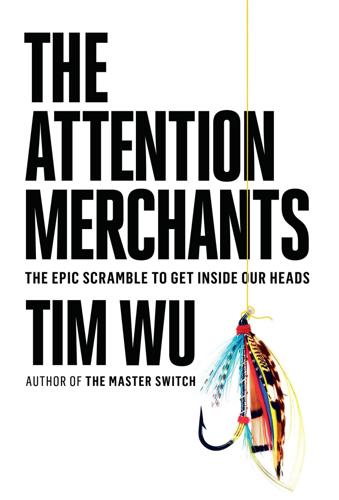
The Attention Merchants: The Epic Scramble to Get Inside Our Heads
by
Tim Wu
Published 14 May 2016
But that $100 million was an offer he couldn’t refuse, and so House of Cards, arguably the first serious feature drama to debut on the Internet, began looking for its cast. This of course was no lark for Netflix. With the purchase of House of Cards, the rising firm was aiming to cause a definitive shake-up in both the television and Internet content markets. Consider that in 2011, all commercial Internet content was driven by advertising. Sure, there were different types: programmatic advertising, native advertising, Google AdWords, YouTube prerolls, Facebook ads, and Twitter’s sponsored tweets. But behind everything was the same old model: that of the attention merchant.
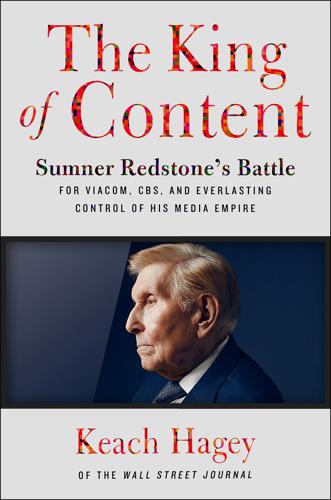
The King of Content: Sumner Redstone's Battle for Viacom, CBS, and Everlasting Control of His Media Empire
by
Keach Hagey
Published 25 Jun 2018
After a year, they recruited a third partner, veteran digital executive Jon Miller, the former chief of News Corp’s digital business and chief executive of AOL, and launched a $25 million fund.45 A third fund would aim to raise $40 million.46 Over the years, they invested in companies like Percolate, a marketing technology company; NewsCred, a content marketing company; Mic, a millennial-focused digital media company; and Maker Studios, a multichannel network of online videos that was bought by Disney. Shari retained the title of president at National Amusements, but it was ceremonial. She had decided to reinvent herself as a skinny jeans–wearing, Apple Watch–sporting VC.
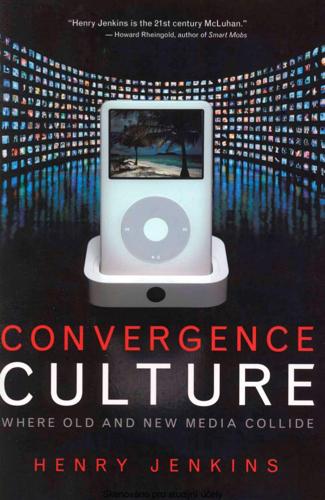
Convergence Culture: Where Old and New Media Collide
by
Henry Jenkins
Published 31 Jul 2006
N e w models of marketing seek to expand consumer's emotional, social, and intellectual investments w i t h the goal of shaping consumption patterns. In the past, media producers spoke of "impressions." N o w , they are exploring the concept of audience "expressions," trying to understand h o w and w h y audiences react to the content. Marketing gurus argue that b u i l d i n g a committed "brand community" may be the surest means of expanding consumer loyalty and that product placements w i l l allow brands to tap some of the affective force of the affiliated entertainment properties. For this reason, shows such as American Idol are being watched closely b y advertisers, marketing companies, television networks, and trade press reporters, all eager to understand h o w corporate convergence strategies may be reshaping the branding process.
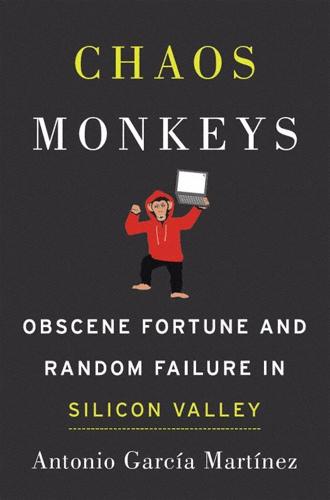
Chaos Monkeys: Obscene Fortune and Random Failure in Silicon Valley
by
Antonio Garcia Martinez
Published 27 Jun 2016
Everyone would cheer on its lynching. Imagine the lurid interest in what life was really like inside, plus the joy at its roasting. It would be a titillating spectacle of taboo revelation. New York tech and life at Goldman Sachs, those would be our first two forays into the corporate-driven, mercenary written word—“content marketing,” to use the hideous marketer’s term for it. According to the leading PR mythologies, day-of-the-week posting choice was critical. The media boom would reverberate depending on its magnitude and resonance inside whatever industry echo chamber it was launched. And so you wanted a few full-on workdays after launch to let that echo play out.

A Crack in the Edge of the World
by
Simon Winchester
Published 9 Oct 2006
The vineyard country of the Napa and Sonoma valleys – though at the time reeling from the phylloxera infestation – was hit particularly hard, and workers tell of the acres of vines taking on the appearance of the ocean, with the rows of grape arbours rising and falling in great waves as the shocks tumbled down the hillsides. Sonoma County’s main city, Santa Rosa, was savaged, to a degree that has been largely eclipsed by the attention given to San Francisco. It was said at the time to be the prettiest community in California, a bustling and contented market town of about 6,000. But it abounds with horror stories, not least because most of the town’s brick buildings, held together by a cheap lime mortar made with inferior sand, came tumbling heavily down – while many of the wooden frame houses merely slid neatly off their foundations and stood, sagging inelegantly, out in the streets.

Nexus: A Brief History of Information Networks From the Stone Age to AI
by
Yuval Noah Harari
Published 9 Sep 2024
David Gertner and Laura Rifkin, “Coca-Cola and the Fight Against the Global Obesity Epidemic,” Thunderbird International Business Review 60 (2018): 161–73; Jennifer Clinehens, “How Coca-Cola Built the World’s Most Memorable Brand,” Medium, Nov. 17, 2022, medium.com/choice-hacking/how-coca-cola-built-the-worlds-most-memorable-brand-c9e8b8ac44c5; Clare McDermott, “Go Behind the Scenes of Coca-Cola’s Storytelling,” Content Marketing Institute, Feb. 9, 2018, contentmarketinginstitute.com/articles/coca-cola-storytelling/; Maureen Taylor, “Cultural Variance as a Challenge to Global Public Relations: A Case Study of the Coca-Cola Scare in Europe,” Public Relations Review 26, no. 3 (2000): 277–93; Kathryn LaTour, Michael S. LaTour, and George M.

The Innovators: How a Group of Inventors, Hackers, Geniuses and Geeks Created the Digital Revolution
by
Walter Isaacson
Published 6 Oct 2014
If you have universal backlinks, you have a basis for micropayments from somebody’s information that’s useful to somebody else.”49 But a system of two-way links and micropayments would have required some central coordination and made it hard for the Web to spread wildly, so Berners-Lee resisted the idea. As the Web was taking off in 1993–94, I was the editor of new media for Time Inc., in charge of the magazine company’s Internet strategy. Initially we had made deals with the dial-up online services, such as AOL, CompuServe, and Prodigy. We supplied our content, marketed their services to our subscribers, and moderated chat rooms and bulletin boards that built up communities of members. For that we were able to command between one and two million dollars in annual royalties. When the open Internet became an alternative to these proprietary online services, it seemed to offer an opportunity to take control of our own destiny and subscribers.

The Rise of the Network Society
by
Manuel Castells
Published 31 Aug 1996
Zook, Matthew (1998) “The web of consumption: the spatial organization of the Internet industry in the United States”, paper delivered at the Association of Collegiate Schools of Planning Conference, Pasadena, California, November 5–8 (it can be downloaded from: www.socrates.berkeley.edu/-zook/pubs/acsp1998.xhtml). —— (2000a) “The web of production: the economic geography of commercial Internet content production in the United States”, Environment and Planning A, 32. —— (2000b) “Old hierarchies or new networks of centrality: the global geography of the Internet content market”, submitted for a special issue of the American Behavioral Scientist. —— (2000c) “The role of regional venture capital in the development of the Internet commerce industry: the San Francisco Bay region and the New York Metropolitan area”, unpublished PhD dissertation, Berkeley, CA: University of California.

The Art of SEO
by
Eric Enge
,
Stephan Spencer
,
Jessie Stricchiola
and
Rand Fishkin
Published 7 Mar 2012
, The Growth of Search Complexity map spam in local search, Local Search misuse of alternative content workarounds for SEO of Flash files, SWFObject and NoScript tags paid links, Buying links for SEO pingbacks, trackbacks, and comments as vectors for, Content Management System (CMS) Issues preventing in user-generated content, User-Generated Content Strategies for Long-Tail Targeting search engine, Glossary theory of spam detection, Link farms/link networks unnatural growth in links for a site, Temporal Link Growth Measurements unnatural link acquisition rates, Temporal factors “Spam Recognition Guide for Raters”, Competitors Can Report You spamdexing, Glossary spamglish, Glossary Sparks (Google+), Google+ Sparks specialty social networks, Specialty social networks speech-to-text solutions, applied to audio and video files to extract data, Multimedia Is Becoming Indexable Sphinn, site for SEO practitioners, Communities in Social Networks spider traps, Search engine–friendly navigation guidelines, Glossary spidering traffic, Search Engine Robot Traffic Analysis (see search engine robot traffic analysis) spiders, Crawling and Indexing, Accessibility/spiderability, Logfile Tracking, Spiderable Link Structures, Category structuring, Mobile Search, Basic low-budget SEO ideas, Glossary, Glossary accessibility of website to, Accessibility/spiderability defined, Glossary Googlebot-Mobile, Mobile Search learning semantic relationships, Category structuring link structures easily crawled by, Spiderable Link Structures records of activity on your site, Logfile Tracking Screaming Frog SEO Spider, Basic low-budget SEO ideas SpyFu, SpyFu SSL and https: pages, How to Avoid Duplicate Content on Your Own Site SSL certificates, Recognizing Low-Quality Domains and Spam Sites static web pages, AJAX and JavaScript, Glossary stemming, Glossary stickiness, Glossary sticky posts, Sticky posts stock photo sites, images from, Image Optimization Tips Stone Temple Consulting, Selecting the Right Analytics Package, Traffic by keyword, Stone Temple Consulting LinkFocus, Ranking, Third-party tools to check for crawl errors 2007 Web Analytics Shootout report, Selecting the Right Analytics Package crawl analysis tools, Third-party tools to check for crawl errors interview series, Traffic by keyword LinkFocus, Stone Temple Consulting LinkFocus rankings data collection, Ranking stop words, Glossary stopwords, Using Advanced Search Techniques strategic limitations, identifying in link-building campaign, Identify any strategic limitations strengths, identifying, Combining Business Assets and Historical Data to Conduct SEO/Website SWOT Analysis structural decisions for websites, Structural Decisions StumbleUpon, Leveraging Social News and Tagging Sites, Reddit, StumbleUpon, Quora, Yelp, Flickr, Slideshare, and YouTube metrics on, Reddit, StumbleUpon, Quora, Yelp, Flickr, Slideshare, and YouTube subdomains, Avoidance of unnecessary subdomains, Subdomains, Root Domains, Subdomains, and Microsites, When to Use a Subdomain, Picking the Right URLs, The Two Major Approaches, Setting up a mobile subdomain localized versions of content in, The Two Major Approaches setting up mobile subdomain, Setting up a mobile subdomain unnecessary, avoidance of, Avoidance of unnecessary subdomains URL optimization and, Picking the Right URLs when to use, When to Use a Subdomain subfolders, Root Domains, Subdomains, and Microsites, When to Use a Subfolder, The Two Major Approaches localized versions of content in, The Two Major Approaches search engine metrics on, Root Domains, Subdomains, and Microsites when to use, When to Use a Subfolder subscriber-only or deleted content, uncovering, Uncovering subscriber-only or deleted content subscribers to blogs, Blog subscribers subscription-based sites, content crawled and indexed by Google, Requires form submission success, measuring for SEO projects, Tracking Results and Measuring Success, Why Measuring Success Is Essential to the SEO Process, The Tracking Cycle: Produce, Launch, Measure, Refine, How to Establish a Proper Baseline, Using Analytics as a Business Case for SEO why measuring success is essential to process, Why Measuring Success Is Essential to the SEO Process, The Tracking Cycle: Produce, Launch, Measure, Refine, How to Establish a Proper Baseline, Using Analytics as a Business Case for SEO analytics as business case for SEO, Using Analytics as a Business Case for SEO establishing baseline, How to Establish a Proper Baseline tracking cycle, The Tracking Cycle: Produce, Launch, Measure, Refine Superpages, Optimizing Your Website for Local Search Engines supplemental index, Glossary SWFObject, SWFObject and NoScript tags, SWFObject Flash optimization and, SWFObject misuse by spammers, SWFObject and NoScript tags SWOT (Strengths, Weaknesses, Opportunities, Threats) analysis, Advanced Methods for Planning and Evaluation, Combining Business Assets and Historical Data to Conduct SEO/Website SWOT Analysis combining business assets and historical data to conduct, Combining Business Assets and Historical Data to Conduct SEO/Website SWOT Analysis Sycara, Ranking, SEO Platforms, Third-party tools to check for crawl errors crawl analysis tools, Third-party tools to check for crawl errors rankings data collection tool, Ranking SEO platform, SEO Platforms syndication of content, Consequences of Duplicate Content, Marketing Content for Link Acquisition, A Closer Look at Content Syndication, Glossary article syndication, Glossary duplicate content and, Consequences of Duplicate Content T tagging (or bookmarking) sites, Leveraging Social News and Tagging Sites tagging, or tags, Glossary tags, Flickr, Publicizing your video using for photos on Flickr, Flickr videos uploaded to YouTube, Publicizing your video target audience, Glossary target customers, Business Factors That Affect the SEO Plan target keywords, website structure and, Target keywords Tax Rap YouTube campaign, Intuit, Some Success Stories Using YouTube taxonomy, Glossary taxonomy of a website, Taxonomy and ontology technology decisions, Technology Choices, Technology Decisions choices of technology and SEO planning, Technology Choices important issues to address at outset, Technology Decisions temporal data on links, Temporal factors temporary (302) redirects, Technology Decisions term weighting, Document Analysis and Semantic Connectivity testing SEO, SEO Testing, Sample experimental approach, Start with a hypothesis sample experimental approach, Sample experimental approach starting with a hypothesis, Start with a hypothesis text, What Content Can Search Engines “See” on a Web Page?